Bad company? The pericardium microbiome in people investigated for tuberculous pericarditis in an HIV-prevalent setting
- PMID: 39528106
- PMCID: PMC12138806
- DOI: 10.1016/j.micinf.2024.105434
Bad company? The pericardium microbiome in people investigated for tuberculous pericarditis in an HIV-prevalent setting
Abstract
Background: The site-of-disease microbiome and predicted metagenome were evaluated in a cross-sectional study involving people with presumptive tuberculous pericarditis. We also explored the interaction between C-reactive protein (CRP) and the microbiome.
Methods: People with effusions requiring diagnostic pericardiocentesis (n=139) provided pericardial fluid for sequencing and blood for CRP measurement.
Results: Pericardial fluid microbiota differed in β-diversity among people with definite (dTB, n=91), probable (pTB, n=25), and non- (nTB, n=23) tuberculous pericarditis. dTBs were Mycobacterium-, Lacticigenium-, and Kocuria-enriched vs. nTBs. HIV-positive dTBs were Mycobacterium-, Bifidobacterium-, Methylobacterium-, and Leptothrix-enriched vs. HIV-negative dTBs. HIV-positive dTBs on ART were Mycobacterium- and Bifidobacterium-depleted vs. those not on ART. dTBs exhibited enrichment in short-chain fatty acid (SCFA) and mycobacterial metabolism pathways vs. nTBs. Additional non-pericardial involvement (pulmonary infiltrates) was associated with Mycobacterium-enrichment and Streptococcus-depletion. Mycobacterium reads were in 34 % (31/91) of dTBs, 8 % (2/25) of pTBs and 17 % (4/23) nTBs. People with CRP above (vs. below) the median value had different β-diversity (Pseudomonas-depleted). No correlation was found between enriched taxa in dTBs and CRP.
Conclusions: Pericardial fluid microbial composition varies by tuberculosis status, HIV (and ART) status and dTBs are enriched in SCFA-associated taxa. The clinical significance, including mycobacterial reads in nTBs and pTBs, requires evaluation.
Keywords: Extrapulmonary tuberculosis; HIV; Microbiome; Pericarditis.
Copyright © 2024 The Authors. Published by Elsevier Masson SAS.. All rights reserved.
Conflict of interest statement
Declaration of competing interest The authors declare no competing interests.
Figures
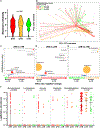
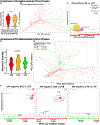
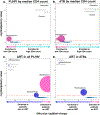
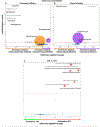
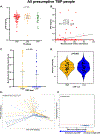
Update of
-
Bad company? The pericardium microbiome in people investigated for tuberculosis pericarditis in an HIV-prevalent setting.medRxiv [Preprint]. 2024 Apr 27:2024.04.26.24306431. doi: 10.1101/2024.04.26.24306431. medRxiv. 2024. Update in: Microbes Infect. 2025 Mar-Apr;27(3):105434. doi: 10.1016/j.micinf.2024.105434. PMID: 38712063 Free PMC article. Updated. Preprint.
References
-
- Global tuberculosis report 2022. Geneva: World Health Organization; 2022.
-
- Mayosi BM, Burgess LJ, Doubell AF. Tuberculous pericarditis. Circulation 2005; 112(23):3608–16. - PubMed
-
- Mayosi BM, Wiysonge CS, Ntsekhe M, et al. Mortality in patients treated for tuberculous pericarditis in sub-Saharan Africa. S Afr Med J 2008;98(1):36–40. - PubMed
MeSH terms
Substances
Grants and funding
LinkOut - more resources
Full Text Sources
Medical
Research Materials
Miscellaneous

